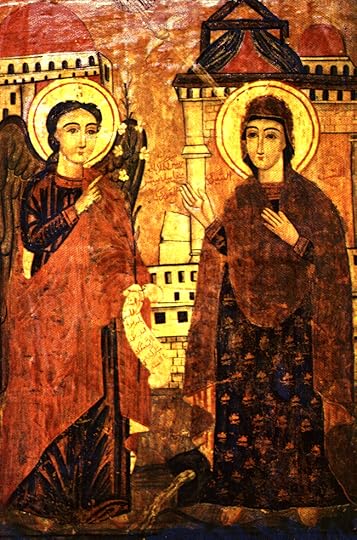Stephen Morris's Blog, page 56
April 8, 2013
“Diamonds are a girl’s best friends!”

Diamonds are the birthstone of April.
The word diamond comes from the Greek word “adamas” meaning unconquerable or invincible. (Its Aryan root dam, to tame or subdue, is also the basis of the word ”madam”. The adjective “adamas” was employed to describe the hardest substance known and became synonymous with the gem, in reference to the hardness of this stone.
In medieval Europe, the peasants believed diamonds could attract lightening and Judaic lore claimed that the brilliance of the stone was directly tied to the guilt or innocence of whomever was wearing it. Tell a lie and your diamond would dim. If you wanted a sparkling stone you had to be truthful. Even far into the 14th century, Jean de Mandeville wrote, “It happens often that the good diamond loses its virtue by sin and incontinence.”
In the Middle Ages many thought diamonds could cure disease. Because of the clarity of a fine diamond it seemed likely that the stone could filter out the impurities in a sick person and save them. For the same reason it was long believed that anyone wearing a diamond could never be poisoned. People often slept with diamonds in the hopes of waking up well, which led to a vast illegal trade of false gems.
Other attributes of diamonds are that they bring courage and hope to the wearer. The Roman’s believed that when one wore a diamond they were unable to be conquered by their enemies- a story that surely brought much hope and courage to soldiers or politicians able to afford the costly stone.
Diamonds, of course, are well known today as a traditional part of wedding and engagement rings. In the Middle Ages and the Renaissance, every ring set with a precious stone was more an amulet that bestowed magical powers upon its wearer, rather than a piece of jewelry. When set in gold and worn on the left side, it was believed that the diamond held the power to drive away nightmares, to ward off devils, phantoms and soothe savage beasts.(While diamonds association with wedding rings is largely a modern concept, a diamond wedding ring was given to Mary of Burgundy by Archduke Maximilian of Austria in 1477.)
April 4, 2013
Daisy, the Flower of April

Daisy, the flower of April, is associated with the planet Venus and the deities Freya, Artemis (Diana), and Thor.
Daisy, said to have sprung from the tears of Mary Magdalen and associated with April whose “showers are sweet with fruit” according to Geoffrey Chaucer, is a “feminine” flower whose element is water (according to the alchemists). Spring has not fully arrived until you can step on 12 daisies, according to an old saying. It is used in magic to promote lust and love. Thor used daisy-chains when he disguised himself as Freya to fool the giant Thrymer, who wanted Freya as his wife.Plucking the petals of a daisy while reciting, “S/he loves, s/he loves me not” will reveal the true feelings of a potential lover. Picking the first daisy of the season will make you an uncontrolled flirt and sleeping with a daisy under your pillow will bring an absent lover back to you.
Daisy can be eaten to relieve stomach ulcers (as Henry VIII did) and in Wales (where Henry’s family came from), daisy was used to cure insanity, treat smallpox, tumors, jaundice and skin diseases. According to an ancient Celtic legend, daisies came from the spirits of children who died at birth; therefore daisies are also associated with innocence.
April 1, 2013
Advance Orders for Paperback of Part 3 Available NOW!

Fen’ka is consumed by flames on the Old Town Square and screams a curse over Prague with her dying breath!
COME HELL OR HIGH WATER, PART 3: DELUGE is now available for pre-order and advance sales! Click here for the Pubslush.com site and then choose the level of “Support” that you prefer. For $15, an autographed paperback can be yours when the book is released in late April. Other levels of additional support, with other perks and awards, are available as well. Help support the final layout and design of the paperback by ordering yours TODAY!
If you want an eBook version now, you can download the Kindle version here.
As always: don’t forget to post a Customer Review on Amazon! The more reviews, the more Amazon (and other sites) will feature the books. Thank you!
March 31, 2013
April Fool’s Day!
Chanticleer the rooster and Reynard the fox from Chaucer’s “Canterbury Tales.”
Precursors of April Fools’ Day include the Roman festival of Hilaria, held March 25, and the medieval Feast of Fools, held December 28, still a day on which pranks are played in Spanish-speaking countries.
In Chaucer’s Canterbury Tales (1392), the “Nun’s Priest’s Tale” is set Syn March bigan thritty dayes and two. Modern scholars believe that there is a copying error in the extant manuscripts and that Chaucer actually wrote, Syn March was gon. Thus, the passage originally meant 32 days after April, i.e. May 2, the anniversary of the engagement of King Richard II of England to Anne of Bohemia, which took place in 1381. Readers apparently misunderstood this line to mean “March 32″, i.e. April 1. In Chaucer’s tale, the vain rooster Chaunticleer is tricked by a fox.
The Roman celebration of Hilaria on the eighth day before the Kalends of April—March 25—in honour of Cybele, the mother of the gods; the day of its celebration was the first after the vernal equinox, or the first day of the year which was longer than the night. The winter with its gloom had died, and the first day of a better season was spent in rejoicings. All kinds of games and amusements were allowed on this day; masquerades were the most prominent among them, and everyone might, in his disguise, imitate whomsoever he liked, and even magistrates.
March 29, 2013
Part 3 Available NOW!
1356: A witch burns! Prague is cursed!
2002: The curse threatens to destroy Prague with a mammoth flood–can the professors find a way to defend and save the city?
It is the winter of 1356-7 and Nadezda, with the assistance of an elderly rabbi, confronts Lilith to discover the secret of the witch’s curse. Meanwhile, in August 2002, George and Magdalena help carry out the witch’s curse by conjuring the historic flood to wash away the Charles Bridge and its magical protection of the city, allowing them to unleash the devil Svetovit. Using the magic of tarot cards, the Evil Conference professors struggle to release the defensive magic buried deep beneath the streets of Prague. Finally confronting George, Magdalena, and Svetovit face-to-face, can the professors avert the doom that is engulfing the city?
Kindle eBook available here.
Paperback soon-to-be-released! Available for advance orders here on PubSlush..
March 28, 2013
Easter and Eostre

Willow switches are available in the Easter Market in the Old Town Square of Prague. Boys and young men use the switches to swat young ladies in a modern, stylized version of an ancient springtime fertility rite.
In most languages, the Christian festival of Christ’s Resurrection is known as “Pascha” or some other version of the name for “Pesach” (Passover), the Jewish feast Jesus celebrated at the Last Supper and during which he was crucified and risen. Only in English is the Christian festival called “Easter,” derived from the Anglo-Saxon goddess Eostre whose springtime feast was supplanted by that of Christ. (Estrogen and estrus and other related words are also derived from the name of the goddess as well.)
Eostre was the goddess of bounty and new life, the regeneration of nature post-winter and fertility. She was attended by rabbits (known for their prolific reproductive abilities) and decorated eggs were exchanged in her honor. (In some places, these decorated eggs were then buried in the earth as gifts to Eostre so that she could know the hopes and dreams of her children, which were depicted in the paintings on the eggs, and then fulfil them.)
A variety of practices were indulged in that were said to promote the fertility of humans and of crops, including switching young women with braided willow branches. Bonfires were a common fertility rite in the non-Christian world and St. Patrick had a major confrontation with the pagan High King of Ireland because he lit the Christian fire for Easter before the king lit the fertility bonfire nearby.
Stories of descent into the netherworld (i.e. winter) and ascent from the netherworld (i.e. spring) were told in connection with Eostre’s celebration, such as that of Persephone and Hades. The well-known “spring cleaning” of homes was part of preparing to welcome Eostre’s arrival back in the world.
March 26, 2013
Happy New Year!

The entrance to the neolithic tomb of Newgrange in Ireland, which is older than Stonehenge and the Great Pyramid of Giza in Egypt.
The triple spirals found in much Celtic art and at many Celtic monuments, such as the Newgrange tomb, are thought to represent fertility (the nine months of human pregnancy), the past-present-future, the realms of land-sea-sky, or the goddess Brigid (celebrated at the beginning of spring).
Fetrility and the passage of time are deeply embedded in the celebration of the New Year, especially when the vernal equinox was observed as New Year’s Day. (January 1 became the New Year’s Day gradually. Regions of Denmark were the first to make the change in the 1100s and the British Empire was the last, in 1752.) We still number the months as if New Year’s Day fell during March: SEPTember is the seventh month, OCTober is eighth, NOVember is ninth, and DECember is the tenth. New Year’s also marked the beginning of “lent,” the Anglo-Saxon word for “Springtime.”
To promote fertility on the springtime New Year, the pomegranate can be put to many uses. It seeds can be eaten to increase fertility and its skin, dried, can be burned as an incense to attract wealth. A branch of pomegranate can also be used as a “dowsing rod” to locate buried or hidden treasures. Daffodil, one of the flowers most associated with March, can also be used to increase fertility. To attain immortality and overcome the passage of time, eat apples or carry charms made of apple wood. Linden leaves and sage can also be used to lengthen life or achieve immortality.
March 22, 2013
Annunciation

A Coptic icon of the Annunciation, showing the angel Gabriel presenting a lily as he announces the Incarnation to the Mother of God.
Lilies are often associated with the celebration of Annunciation. When Eve was driven from Paradise, lilies bloomed wherever her tears fell onto the earth and Gabriel presented lilies to the Virgin Mary when he announced that her Son would re-open Paradise to mankind. Other legends say that lilies blossomed from drops of milk from Hera’s breasts that fell upon the earth and that the lily was therefore the only flower with a soul. Lilies are traditionally considered to drive away ghosts and evil (esp. the Evil Eye) and can break love spells. The first lily of the season strengthens whoever finds it.
Roses are also associated with Annunciation and are used to cast love spells or in healing magic. If you plant roses in your garden, they are said to grow best if you have stolen the seeds from someone else and will then attract the faerie folk.
The Annunciation is celebrated on March 25 (the traditional date of the springtime equinox). Not only was Annunciation — and the equinox – vital to keeping track of time for secular purposes, many ancient and medieval authors claimed that the Annunciation/equinox date were vital at many points of salvation history: the birthday of Adam and the Crucifixion were said to have occurred on March 25 as well. Some also said that March 25 marked the fall of Lucifer, the parting of the Red Sea, as well as the day on which God said, “Let there be light!”
Sometimes called “Lady Day,” the Annunciation was kept as New Year’s Day in many places; the last to give up Annunciation as the New Year’s Day was England and its American colonies in 1752. The correct synchronization of the equinox with the Annunciation is a critical element in the calculation of the date of Easter and the medieval and Renaissance disconnect between the Annunciation and the equinox prompted Pope Gregory XIII to reform the calendar in 1582.
March 20, 2013
Aries the Ram

Aries, the ram, is the first sign of the zodiac in western astrology.
The sign Aries, the ram, is the first sign of the zodiac in traditional western astrology. The sun enters this constellation on or about the vernal equinox, which was the New Year Day of the Middle Ages. Today, those born between March 20 and April 19 are considered to be born in Aries. The sign is ruled by Mars (which means it is associated with confidence and self-assertion, aggression, sexuality, energy, strength, ambition and impulsiveness) and considered a “fire” sign (i.e. with positive, extrovert characteristics).
Certain acts of ritual magic were considered especially effective if performed during the days of Aries. Strength, authority, and leadership could be supported and increased — or decreased and made weak — with magic while the sun or the moon passed through this sign. Divination concerning attacks of various sorts or aggression would be performed during this period. Nations and places — not only people — were considered to be under the protection of specific signs of the zodiac and England, Germany, Poland, Palestine, Syria, Lithuania belonged to Aries.
In general terms, an Aries personality is often enthusiastic, outward looking, brave and adventure-loving. The dark side of these traits, however, might also be present, to a greater or lesser extent: selfishness, quick to be angry, impatient or foolhardy.
A complete horoscope would include not only the birthsign and ruling planet but the position of the other planets in the various other constellations and signs of the zodiac. All these impact the final reading and the skilled interpretation of the chart is what most people consider “real” astrology.
March 18, 2013
Spring has Sprung!

Stonehenge is considered by many to be a Druid ritual/astronomical site used to mark the seasonal solstices or equinoxes.
The spring equinox was long considered the beginning of the year in many places; one of which, England, only adopted January 1 as New Year’s Day in 1752. Many of the egg-beliefs now associated with Easter were previously equinox-based. But the springtime equinox always marks the balance of light and dark, night and day and is the magical marker that indicates the world is steadily moving toward the zenith of light (midsummer).
If you make a wish upon seeing the first robin on the day of the vernal (springtime) equinox and complete the wish before the robin flies away, it will come true!
Luckily, your chance to make this wish is soon — the vernal equinox is this week! The pre-industrial, pre-modern world considered February 1-2 to be the first day of spring and the equinox to be “mid-spring,” but most of the modern world thinks of the equinox as the “first day of spring.” Although the equinox marks a consistent astronomical event (crossing the midpoint between the longest and shortest days of the year), the calendar date of the equinox has shifted considerably.
Julius Caesar ordered that the date of the equinox would be known as March 25 and that was the pivot around which the rest of the year rotated. But as the (slightly inaccurate) calendar grew more and more out of alignment with the position of the sun, the equinox crept up earlier and earlier until it was actually happening on March 11. When Pope Gregory XIII revised the calendar in 1582, the equinox was restored to March 25. But even though the current calendar is more accurate than Julius Caesar’s, it has still allowed the equinox to drift. Throughout most of my childhood, the equinox was observed on March 21; now, it is often observed on March 20 (as it is this year).




